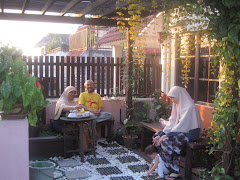Arthritis is the inflammation of a joint and may be a symptom of many disorders. It is marked by pain, stiffness, and swelling of one or more affected joints. The degree of severity ranges from mild pain and stiffness, to excruciating pain and eventual joint deformity. Although no cure has yet been found for the disorder, it can be properly managed to allow you to lead a normal, active, and productive life. The most common types of arthritis are osteoarthritis and rheumatoid arthritis.
Arthritis-osteoarthritis
Osteoarthritis, also known as degerative joint desease, occurs when the cartilage lining the bony surfaces of joints breaks down or when spurs (bony out-growths) develop. The condition is caused by the excessive wear and tear of joints resulting from overuse of a joint, obesity, or malalignment of the bones forming a joint. Most affected are weight-bearing joints such as the lower back, hips and knees. Osteoarthritis commonly affects the elderly though not all exhibit symptoms.
Symptoms
Cause
What you can do
What your doctor can do for you
Prevention tips
Arthritis-rheumatoid arthritis
Unlike osteoarthritis, rheumatoid arthritis is an inflammatory desease which can affect people of all ages. It usually starts in the fingers and can affect several simultaneously. Some people may suffer from only one attack of this desease in their lives. In others, the desease may be long-term and progressive.
Symptoms
Complications
Cause
What you can do
What your doctor can do for you
This article is referred to Malaysia Healthcare Guide-The family health guide MIMS 1997 2nd edition page 222-223.
Arthritis-osteoarthritis
Osteoarthritis, also known as degerative joint desease, occurs when the cartilage lining the bony surfaces of joints breaks down or when spurs (bony out-growths) develop. The condition is caused by the excessive wear and tear of joints resulting from overuse of a joint, obesity, or malalignment of the bones forming a joint. Most affected are weight-bearing joints such as the lower back, hips and knees. Osteoarthritis commonly affects the elderly though not all exhibit symptoms.
Symptoms
- Painful joint, which usually worsens with exercise.
- Swelling of affected joint(s) and occasionally, inflammation.
- Creaking and stiffness, which restrict movement and occasionally disrupt sleep. The muscles surrounding the affected joint become weak from disuse.
- Joint deformity.
Cause
- Wearing out of the cartilage (elastic tissue) lining the bone ends in a joint due to excessive strain over prolonged period of time or due to other diseases, injury or deformity.
What you can do
- Consult a doctor who will determine the type of arthritis you have.
- Rest the joint untill the pain subsides to prevent further inflammation.
- To ease the pain or stiffness of the joint, apply heat on the joint for about 15 minutes once or twice a day using a hot water bottle or towel, or an infrared lamp.
- If the pain is severe, apply a cold pack (ice cubes wrapped in a towel).
- Take simple painkillers.
- If overweight, reduce weight to lighten the load on weight-bearing joints.
- Regular exercise.
What your doctor can do for you
- Take X-rays and do other tests to determine the type of arthritis.
- There is no cure. Beware of 'miracle cures'.
- Prescribe strong anti-inflammatory medicine.
- Recommend occupational therapy.
- Recommend physiotherapy, which includes exercises and heat treatment.
- In severe cases, surgery can be done. Type of surgery will depend on your age and severity of the desease. In elderly with severe desease, joint relcement (artificial joint) can give good results.
Prevention tips
- Avoid excessive exertion.
- Avoid a particular activity temporarily if the affected joint starts to hurt.
- If overweight, reduce weight.
- Always maintain good posture.
Arthritis-rheumatoid arthritis
Unlike osteoarthritis, rheumatoid arthritis is an inflammatory desease which can affect people of all ages. It usually starts in the fingers and can affect several simultaneously. Some people may suffer from only one attack of this desease in their lives. In others, the desease may be long-term and progressive.
Symptoms
- General feeling of malaise (lethargy, generalized aches and pains).
- Pain in the affected joint.
- Swelling of the joint.
- Stiffness, which restricts movement, especially early in the morning.
Complications
- Severe deformity of the joint(s). Affects 1 in 10 people with progressive disaease.
- Pericarditis (inflammation of the membrane enclosing the heart).
- Inflammation of blood vessels, causing ulcers to occur over the hands and feet.
- Pleural effusion (fluid accumulating between the layers of the membrane lining the lungs and the chest cavity).
- Scarring and thickening of lung tissue.
- Enlarged spleen.
Cause
- Not fully known.
What you can do
- Consult a doctor to find out what type of arthritis you have.
- Rest the joint untill the pain subsides, then resume normal activities to prevent stiffness.
- Keep the joint warm at night and in cold weather (eg cover with blanket at night, wear socks or cotton gloves, etc).
- Take simple painkillers.
- Swim, preferably in heated swimming pools.
What your doctor can do for you
- Take X-rays and do other tests to determine the type of arthritis and assess disease activity.
- Prescribe anti-inflamattory medicine, strong painkillers or special medicines.
- Recommend physiotherapy to relive pain and stiffness, improve joint movements and strengthen muscles.
- Recommend occupational therapy to help a patient who has been disabled by the disorder cope with daily activities and tasks.
- Recommend surgery to reduce pain, correct deformities and improve function of the affected joints.
This article is referred to Malaysia Healthcare Guide-The family health guide MIMS 1997 2nd edition page 222-223.





No comments:
Post a Comment